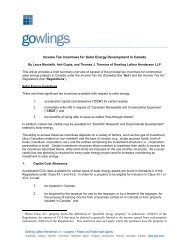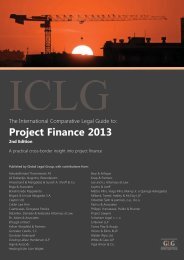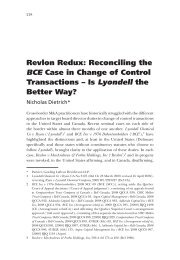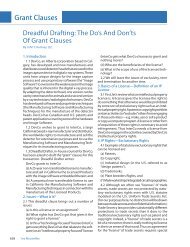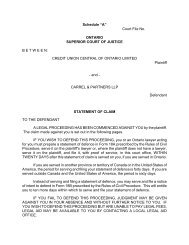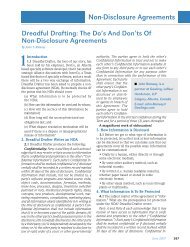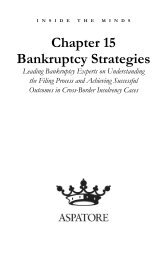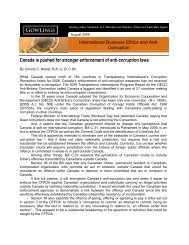Create successful ePaper yourself
Turn your PDF publications into a flip-book with our unique Google optimized e-Paper software.
Re-Entry and Termination of the Lease<br />
The Act also specifically protects subtenants in the event the landlord attempts to reenter<br />
and terminate the lease. Section 21 of the Act allows a subtenant to apply to the<br />
court to require a direct lease be granted to the subtenant on such terms as the court<br />
sees fit. Clearly, this would be unacceptable to most landlords and t<strong>here</strong>fore the<br />
consent should require the subtenant to waive its rights under section 21 of the Act.<br />
Alternatively, the landlord may wish to amend the consent to require the subtenant to<br />
agree to pay to the landlord rent calculated at the rates provided in the lease (rather<br />
than the discounted rates in the sublease) rather than having it waive all of its rights<br />
under section 21.<br />
Bankrupt Tenants<br />
Subtenants are also protected in the event the tenant is bankrupt. Subsection 39(2) of<br />
the Act allows a subtenant three months in which to elect to stand in the shoes of the<br />
tenant and to become a direct tenant of the landlord. In this case, however, the rents<br />
payable are the greater of those payable under the lease or the sublease. Most<br />
landlords would not wish to wait three months before knowing whether or not they will<br />
have to relet the premises. Again, most often we will want the subtenant to waive its<br />
rights under subsection 39(2), but may in some instances prefer the subtenant promise<br />
to elect to become the landlord’s direct tenant.<br />
Restrict the Consent to this Subletting<br />
In granting the consent, it should be clear that the landlord is only consenting to this<br />
particular subletting to this particular subtenant on these particular terms. While doing<br />
so, it is also important not to approve the terms of the sublease in case they are to<br />
some extent less onerous than the obligations of the tenant under the lease.<br />
Lay the Groundwork<br />
In order to ensure that your landlord client can require the tenant and subtenant to sign<br />
a form of consent which addresses these matters, the landlord’s standard lease form<br />
should require the execution of the landlord’s then current form of consent as a<br />
condition to approving any proposed sublease. If at all possible, a copy of the consent<br />
should be appended a schedule to the lease without prejudice to the landlord’s right to<br />
amend the same.



